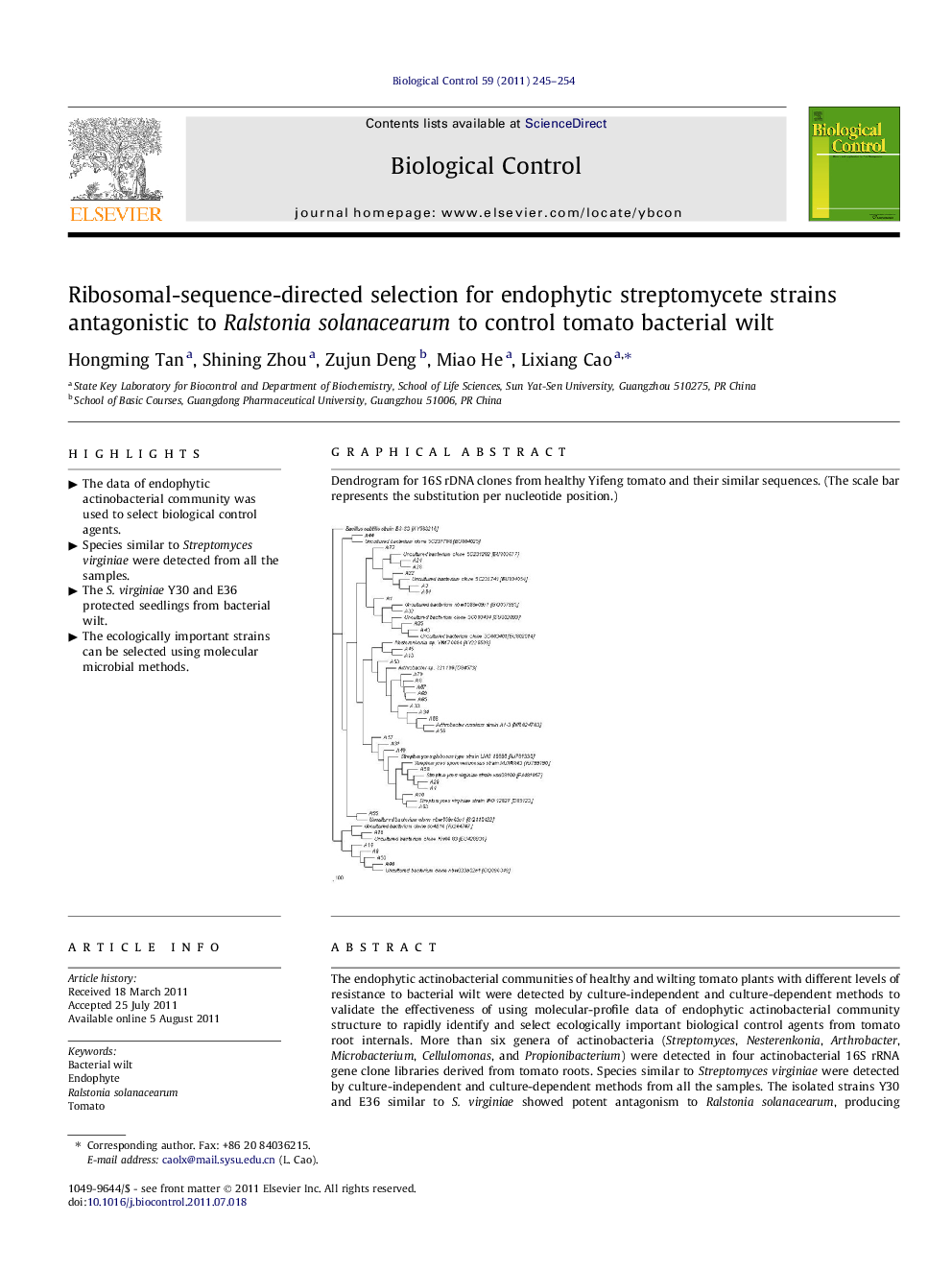| Article ID | Journal | Published Year | Pages | File Type |
|---|---|---|---|---|
| 6373022 | Biological Control | 2011 | 10 Pages |
The endophytic actinobacterial communities of healthy and wilting tomato plants with different levels of resistance to bacterial wilt were detected by culture-independent and culture-dependent methods to validate the effectiveness of using molecular-profile data of endophytic actinobacterial community structure to rapidly identify and select ecologically important biological control agents from tomato root internals. More than six genera of actinobacteria (Streptomyces, Nesterenkonia, Arthrobacter, Microbacterium, Cellulomonas, and Propionibacterium) were detected in four actinobacterial 16S rRNA gene clone libraries derived from tomato roots. Species similar to Streptomyces virginiae were detected by culture-independent and culture-dependent methods from all the samples. The isolated strains Y30 and E36 similar to S. virginiae showed potent antagonism to Ralstonia solanacearum, producing siderophores, and ACC deaminase activity. The two strains showed significant protection to seedlings from bacterial wilt compared with the control seedlings when inoculated into tomato seedlings in greenhouse although they showed different protecting efficacy. The results showed the validity of using molecular-profile data of endophytic actinobacterial community structure to rapidly identify and select ecologically important actinobacterial species to control tomato bacterial wilt and established the validity of using sequence-directed selection for biocontrol strains from diverse microbial communities.
Graphical abstractDendrogram for 16S rDNA clones from healthy Yifeng tomato and their similar sequences. (The scale bar represents the substitution per nucleotide position.)Download full-size imageHighlights⺠The data of endophytic actinobacterial community was used to select biological control agents. ⺠Species similar to Streptomyces virginiae were detected from all the samples. ⺠The S. virginiae Y30 and E36 protected seedlings from bacterial wilt. ⺠The ecologically important strains can be selected using molecular microbial methods.
